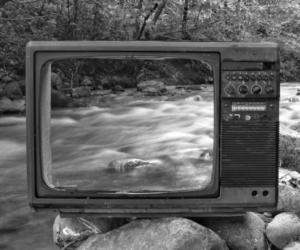
A road trip is one of the greatest experiences you can have, whether it’s as an individual or as a family. A road trip opens you up to so many opportunities like a camping trip off the beaten track or it helps you cover a lot of ground, physically and emotionally, but the most important thing to remember when you are getting ready for a road trip is ensuring your vehicle is good to go. Let’s show you how to prepare your car for your road trip.
1. Have All Your Essential Documents
You need all the essential information, especially if you don’t know how to look after your car. Your owner’s manual will have all of the essential information, but there are also online archives of owner’s manuals available if you don’t have yours to hand.
You also need your car insurance and driver’s license documents, but also make sure there is roadside assistance information because if you find yourself in an accident in the middle of nowhere before you start thinking you need to get a car accident lawyer to sue the other driver, you should have roadside assistance documents, so whatever happens, you will have some peace of mind.
2. Check the Lights
Depending on where you are, it may be by the law to drive with the headlights on, night or day. You will need to check out local laws, especially if you are covering a number of states or going to another country, but make sure that you have someone who checks the lights are in working order.
You can go to a mechanic to ensure that everything is checked over before you head off, but if you are in a position where you need to save money, you should check that the lights are working and make sure the lights are not clouded up inside. If you have foggy headlights you can easily get rid of this problem using toothpaste and baking soda, which are abrasive enough to remove the fog without damaging the headlights.
3. Check the Tires
Your tires need to have the right pressure and tread. You need to check the tire pressure according to the guidelines for your vehicle. There are many benefits to having maximum pressure on the tires, such as it makes your vehicle more efficient. Look at your owner’s manual, and check the tires.
The second thing to do is to check the tread. If you have too much wear on your tire, this is going to make braking far more difficult. You will still be able to stop the car, but because your tires don’t have the optimum level of grip, this could cause an accident because you have misjudged the distance. One of the simple tricks used to be the Abraham Lincoln penny test, but the guidelines have changed. Instead of using a penny, you must replace it with a quarter.
It’s also important to check the spare tire. If your spare tire is a full-size one, it should have the same pressure, but if it’s a smaller tire for temporary use until you get to a garage, the pressure will be indicated on the sidewall. This is why you need your owner’s manual in your glove box!
4. Pack for Emergencies
There are a lot of things you need in place to make sure that you are ready for a road trip. When you are driving long distances, a jerry can is invaluable because if you are filling up your tank and there isn’t going to be a gas station for hundreds of miles, a jerry can will be a lifesaver. It’s a good idea to get into the habit of filling up your tank and a jerry can whenever you hit a service station.
You should also think about the conditions you are driving in. Your tires should be in optimum pressure and tread, but you should also think about the following if you are driving on rough terrain or in the conditions.
- Towing rope. If you find yourself veering off-road, a tow rope can make a massive difference to everyone.
- Snow chains. Having a snow chain will ensure that you are giving your tires that extra tread on rough terrain.
You should also have a roadside emergency kit that includes jumper cables, a tire pressure gauge, and a warning triangle, just to name a few. Having one of these roadside emergency kits in place will cover most situations.
5. Test Your Brakes
Testing your brakes is critical to make sure that your vehicle is in the best shape possible before you head out on your big trip. You can check your brakes by taking your car out for a drive and listening out for any scraping or squeaking noises and keeping your nose “peeled” for any burning smells.
Additionally, if the brake pedal is going down to the floor completely you may need to replace the brake pads.
6. Pre-Programming Your GPS
A very simple thing to get you ready for your road trip before you head off (in addition to planning your breaks), you’ve got to make sure that all your destinations are pre-programmed into your GPS.
Driving long distances can be very stressful on our minds and body, and ensuring that you have a list of all of the destinations can ensure that you focus on the act of driving. When you are driving on new roads, you’ve got to have your wits about you, so rather than putting in destinations while you are traveling, make sure you do this first.
7. Checking Your Fluid Levels
You need to check your engine oil, radiator coolant, windshield washer fluid, and your power steering fluid, as well as transmission and brake fluid. Because a road trip should be all about enjoying yourself, the last thing you need is to be concerned about your car in the middle of nowhere.
Follow these tips and you will guarantee your vehicle is ready for every terrain on your trip.



